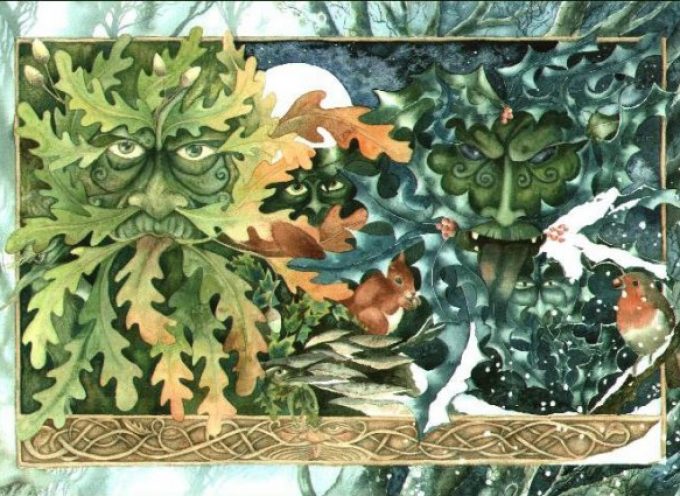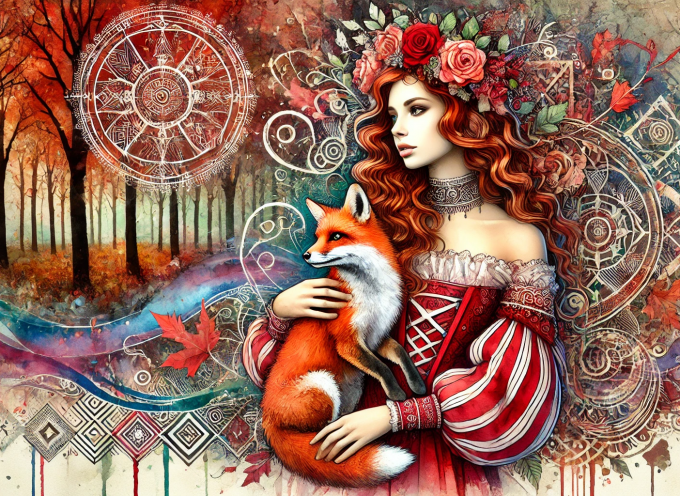Beltane is a threshold festival, unique even among the most important celebrations of the year. It marks not just the beginning of a new season but the transition to the bright, sunlit half of the year—the triumph of light over darkness, warmth over cold, order over chaos, as nature awakens in all its glory and life rejoices in its eternal cycle. The fires of Beltane symbolize purification and renewal; their flames dispel the last shadows of winter, filling the world with energy and joy.
In some years, the energies of Beltane intertwine with Easter celebrations. Though these holidays arise from different traditions—one rooted in ancient pagan rites, the other carrying the light of Christian faith—their magic merges on this day. Pagan and Christian alike sense a special enchantment in the air, an invisible force that transforms the world.
This is a time of fire—both the Beltane bonfires and the blessed flame of Easter speak the same truth: light conquers darkness, life triumphs over death. It is a time of rebirth—of the earth, the spirit, and hope. A time when love and joy fill the heart, and nature itself exults in a new beginning. On this day, the boundaries between worlds grow thin, and anyone can feel the breath of magic—always within reach, if only we extend our hand.
The Key Symbols of Beltane
Fire
One of Beltane’s most potent symbols is fire—cleansing fire that burns away the old, the stagnant, the irrelevant; warming fire that embodies the strength and generosity of the life-giving sun. On the eve of the festival, it was customary to extinguish all old winter fires and kindle new, pure flames.
The fiery wheel races through our lives, incinerating what has outlived its purpose—be it pain, sorrow, worn-out relationships, or illusions that hold us back. The longer we cling to them, the fiercer this fire burns today and throughout the week ahead.
Whether we welcomed it or not, expected it or not—the time of fire has come.
Do not resist it, nor smother it within yourself.
Embrace this fire and celebrate it, for it brings new life!
The Maypole
Beltane is a festival where fire and greenery intertwine in a single dance of life. If the bonfires symbolize purification and solar power, then all that is linked to young vegetation embodies the essence of this season—the awakening of the earth, the start of a new cycle of growth and fertility. Even today, when many traditions are forgotten, people can’t help but smile at the first leaves on the trees or snowdrops piercing the cold soil. In ancient times, this reawakening of nature was seen as a true miracle, deserving of gratitude and sacred rites.
The central symbol of Beltane was the Maypole—a young, freshly budded tree brought from the forest and erected at the heart of the village. Adorned with bright ribbons, flowers, and fresh shoots, it became a living altar of spring. People danced in circles around it, singing and performing rituals to invoke fertility and prosperity. Over time, the living tree was replaced by a tall pole crowned with a floral wreath, but its essence remained: an axis connecting heaven and earth, a symbol of blossoming and vitality. Maidens and youths, holding the ends of the ribbons, wove intricate patterns as they danced—a ritual act symbolizing the intertwining of fates and the unity of the community.
The Food of Beltane
Like any significant festival, Beltane had its own sacred feast. It was not lavish—spring was a lean time, with last year’s harvest nearly spent and the new one still distant. Yet within this simplicity lay its magic.
The festive table centered on milk, eggs, and the first greens—foods brimming with primal life force. Milk, often sweetened with honey, symbolized purity and nourishing energy. Eggs represented rebirth and hidden potential. The young greens (nettles, sorrel, goutweed) were the earliest gifts of the awakening earth.
From these ingredients came modest dishes: flatbreads, herb-filled pastries, fresh cheese, soups with dried mushrooms and wild herbs. Nothing superfluous—only what carried the concentrated essence of spring. Even the bread, baked from the last of the flour mixed with bran, became sacred as it was shared among all, strengthening the bonds of community.
This humble yet symbolically rich meal served as a reminder: life renews itself. Though winter took much, the earth offers its gifts once more. The light has prevailed—and a new cycle begins!
© Elena Shuwany








No comments!
There are no comments yet, but you can be first to comment this article.